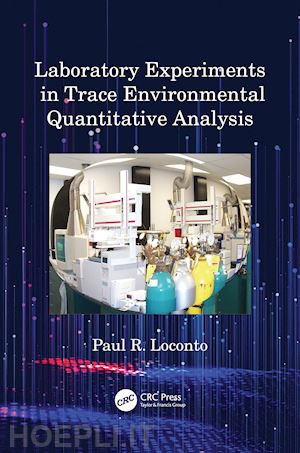Paul R. Loconto holds a Ph.D. in analytical chemistry from the University of Massachusetts Lowell and an M.S. in physical organic chemistry from Indiana University, Bloomington. He has published 35 peer-reviewed papers in analytical chemistry and in chemical education. He has given over 40 talks and poster presentations at various workshops, meetings, and conferences. After brief stints at the American Cyanamid Co. (Stamford, CT) and the Dow Chemical Co. (Midland, MI) and beginning in 1974, Dr. Loconto taught introductory, general, and organic chemistry at Dutchess Community College (Poughkeepsie, NY) for 12 years. He developed an environmental analysis laboratory course for the College’s natural resource conservation program. He also expanded the college’s capability in analytical instrumentation. He then joined NANCO Environmental Services (Wappingers Falls, NY) as R&D manager in 1986. While at NANCO, he received a Phase 1 Small Business Innovation Research (SBIR) Grant from the U.S. Environmental Protection Agency (U.S. EPA) to conduct trace analytical method development to identify and quantify traces of environmental organic contaminants in water using reversed-phase solid-phase extraction (RP-SPE) techniques. RP-SPE was relatively knew back then. The New York State Science and Technology Center matched the Phase 1 SBIR grant at that time. He also contributed to initiating a technical library while contributing to the laboratory’s training initiatives. He joined the Michigan Biotechnology Institute (Lansing) in 1990 where he led a small analytical research group in support of pilot scale fermentation studies in agricultural biotechnology. In 1992 he became the laboratory manager of the analytical laboratory in graduate research for environmental engineering at Michigan State University (East Lansing) where he conducted trace analytical method development for both the National Institute of Environmental Health Science (NIEHS) analytical core and the U.S. EPA Hazardous Substance Research Center while coordinating the development of an instructional analytical laboratory for the graduate school. In 2001, he joined the Michigan Department of Community Health, Bureau of Laboratories (Lansing) as a Laboratory Scientist Specialist. Here, in addition to training new employees on how to use gas chromatographs, gas chromatograph-mass spectrometers, high performance liquid chromatographs and Fourier Transform infrared spectrophotometers as well as RP-SPE sample prep techniques, he taught co-workers how to satisfy QA/QC requirements. He also focused on developing novel analytical methods for biomonitoring while conducting trace organics and inorganics quantitative analysis in support of the Laboratory Response Network for the U.S. Centers for Disease Control and Prevention (CDC). He retired in late 2013 yet continues as a consultant, educator, and writer.











